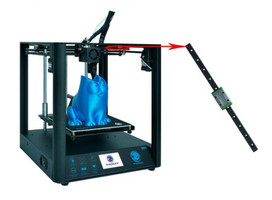What Can You Make with a 3D Printer?
Posted by Proof Writing on 2022 Jan 16th
There are plenty of technological tools and advancements out there that are designed to improve our lives or solve problems. 3D printing is no different. Pretty soon, it will become as common as the internet and smartphones are. Whether you’re a complete newbie or an experienced operator, it’s important to know what can you make with a 3D printer in order to get the most out of this incredible tool.
Introduction to 3D Printing
3D printers were innovated in order to use for rapid prototyping. It still remains as the number one use for 3D printers these days but this tool has greatly evolved to provide more use than ever imagined.
As the name suggests, 3D printers are able to print three-dimensional objects. You can use a variety of materials for printing. This type of printer is no longer used exclusively by hobbyists since their use has grown tremendously.
In 3D printing, the material is laid down layer by layer in order to create a three-dimensional object. This manufacturing process is referred to as an additive process because you are adding to the material as the printing process is ongoing rather than the traditional manufacturing process wherein the raw material is cut, milled, or machined off.

What Can You Make with a 3D Printer at Home?
With a bit of background on how 3D printing works, the next question is this: what can you make with a 3D printer? There is a surprisingly wide array of products that you can make, many of which can be used at home and work, or just for fun.
Functional Parts
You can use 3D printers to create functional parts and tools. Injection molding is a popular technique used in the manufacture of plastic products. In this procedure, molten plastic is ‘injected’ into a mold to form a desired shape. 3D printing is an excellent alternative to this process since creating the initial mold for injection molding is more time-consuming.
You can create functional parts using a variety of materials, such as metal, glass, or rubber-like materials. The best example of its use is for replacement parts.
Models
Another common application for 3D printing is with models designed to explain concepts. This is very common in the medical field such as explaining surgical procedures to patients, visual aids for educational purposes, and in creating architectural models.
Furniture Design
The use of 3D printing for furniture design is another growing application, too. It streamlines and simplifies the process of designing and testing furniture. This specifically reduces the cost of making furniture design prototypes, especially the ones used for displaying in furniture stores (when creating the actual furniture piece for display will prove quite costly).
Prosthetics
3D-printed prosthetics have revolutionized the field of medicine, especially those who are in need of artificial limbs and braces. The creation of prosthetics requires a lot of medical expertise and cost. But its use is not just limited to the manufacture of prosthetics as 3D printing can also help burn victims, as well as the reconstruction of patients who’ve undergone surgery from cancer.
Dentistry
The use of 3D printing in the field of dentistry and orthotics is proving to be a game-changing move. Now, dentists and orthodontists can create more accurate and faster dental models. This technology can be used for creating orthodontic models, constructing surgical tools, and creating models of dental implants and crowns. It can save dentists and patients money, as well as achieving faster and more accurate results.
Forensic Science
The use of 3D printing is also making its way into the field of forensic science. Professionals in this field are using this technology to reproduce crime scenes for courtroom presentations, reconstruction of crucial pieces of evidence, and 3D sketching to transform a crime scene into a digital sketch for in-depth analysis.

Materials Used in 3D Printing
There are a number of materials that can be used with 3D printers including plastic and metal. It is powered by a technique that transforms digital data into a three-dimensional object using the chosen material. Thus, you end up with a physical object.
There are different technologies behind the use of 3D printers that allow the creation of various objects. Some of these technologies include what is known as fused deposition modeling (FDM) and stereolithography. With the latter, you will need a computer-aided design (CAD) in order to “print” the object.
As 3D printer technologies continue to develop, there will be more uses that are available with this tool. If you want to give this technology a shot, you can do so without breaking the bank. The cost of acquisition for 3D printers is more accessible now than when they were first introduced into the market. If you can get your hands on one, be sure to explore with any of the above listed projects so you can maximize the fullest potential of this tool and technology.


